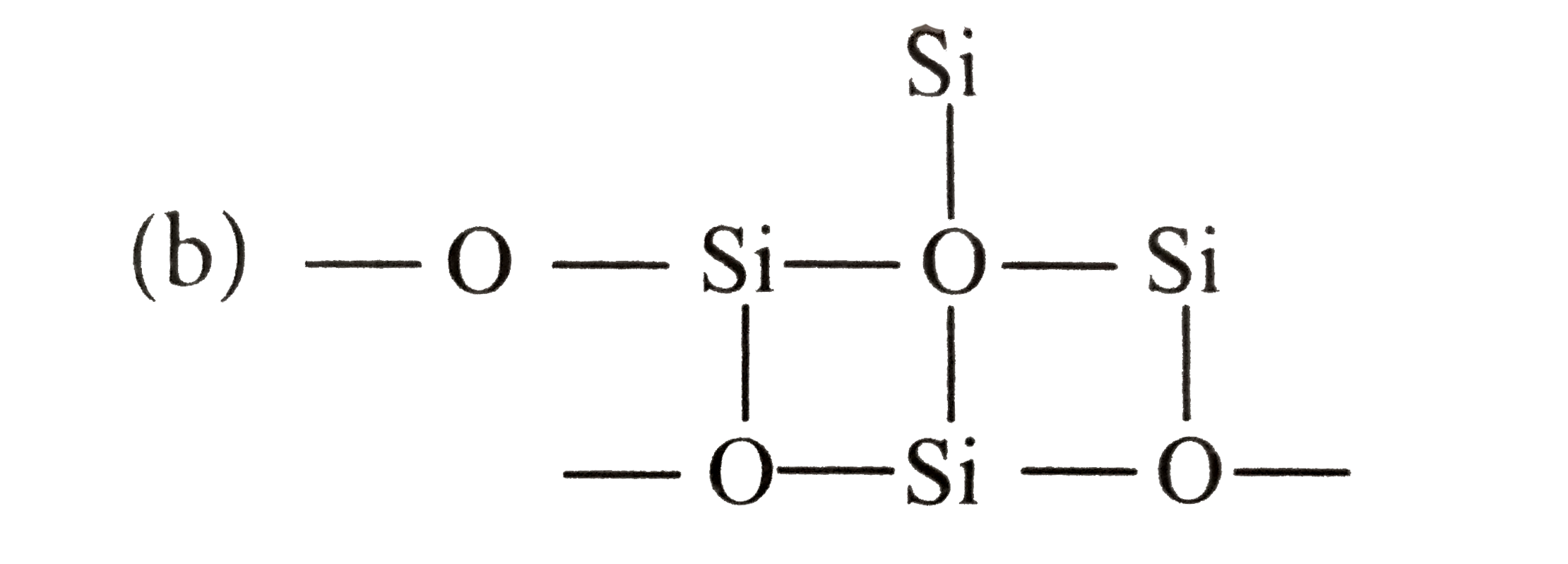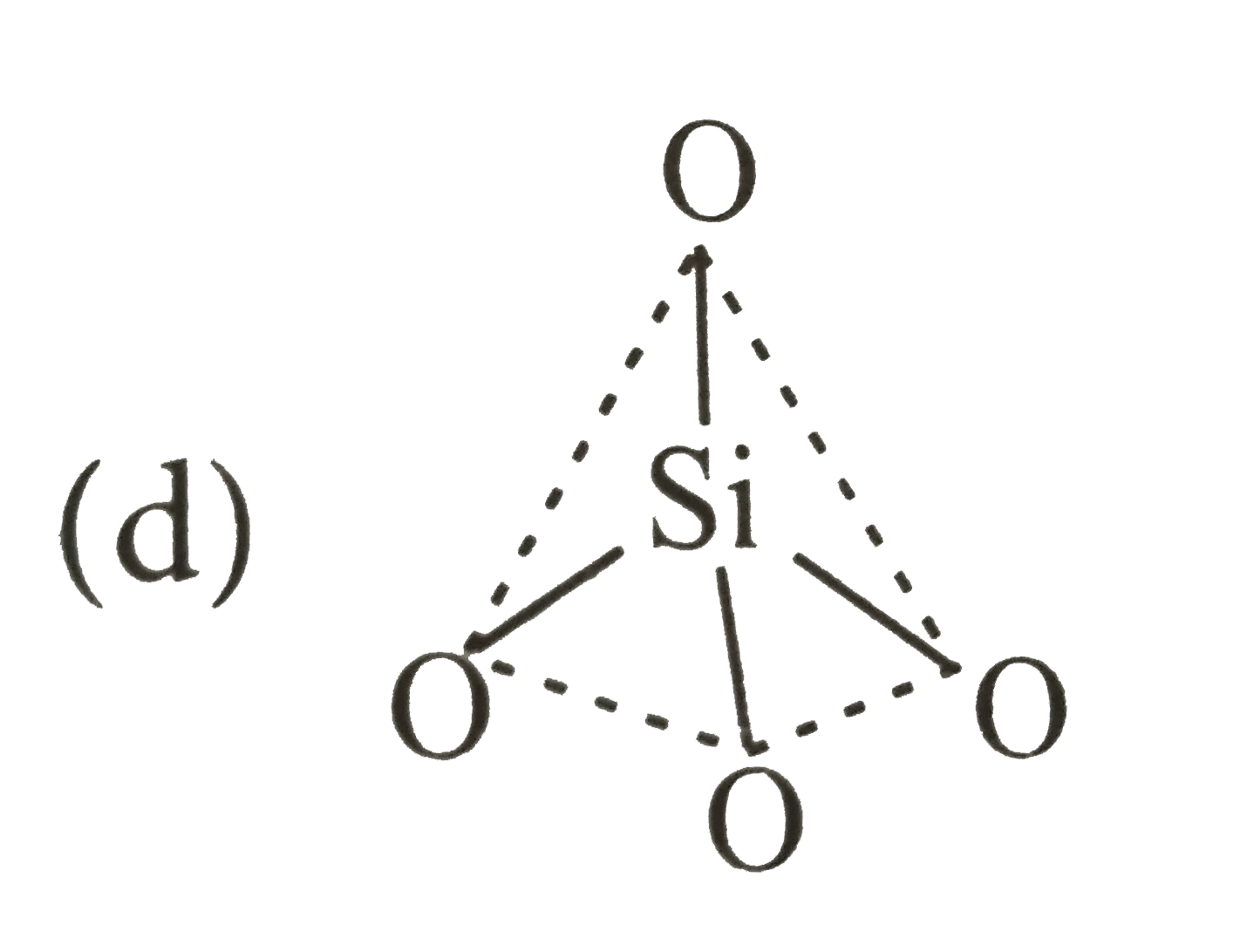What are silicones ?
Step-by-Step Solution:
Step 1: Definition of Silicones
Silicones are polymeric organosilicon compounds that contain Si-O-Si linkages. They can be described as a class of materials that have silicon atoms bonded to oxygen atoms and organic groups.
Step 2: General Formula
The general formula for silicones can be represented as R2SiO, where R represents organic groups (such as alkyl or aryl groups). This formula indicates that each silicon atom is bonded to two organic groups and one oxygen atom.
Step 3: Properties of Silicones
Silicones are known for their high thermal stability. This means they can withstand high temperatures without breaking down, making them suitable for various applications.
Step 4: Preparation of Silicones
Silicones are prepared through the hydrolysis of alkyl or aryl substituted silicon halides. This involves the reaction of silicon halides with water, leading to the formation of silanol compounds.
Step 5: Reaction Mechanism
The preparation can be illustrated by the following reaction:
- Alkyl or aryl halides (e.g., CH3Cl) are reacted with an alloy of copper and silicon to produce dimethyl dichlorosilane (CH3)2SiCl2.
- The reaction can be represented as:
2CH3Cl+Si or Cu→(CH3)2SiCl2+Cu
Step 6: Hydrolysis of Dimethyl Dichlorosilane
The dimethyl dichlorosilane undergoes hydrolysis when reacted with water:
- The reaction is as follows:
(CH3)2SiCl2+2H2O→(CH3)2Si(OH)2+2HCl
Step 7: Polymerization of Dimethylsilanol
The dimethylsilanol formed can undergo polymerization, resulting in the formation of linear silicones. This involves the condensation of silanol groups, leading to the formation of long chains of silicon-oxygen bonds.
Step 8: Structure of Linear Silicones
The polymerization process can be illustrated as:
- The silanol groups (–Si(OH)–) react to form a linear silicone structure, where multiple silicon atoms are linked by oxygen atoms.
Silicones are polymeric organosilicon compounds that contain Si-O-Si linkages. They can be described as a class of materials that have silicon atoms bonded to oxygen atoms and organic groups.
The general formula for silicones can be represented as R2SiO, where R represents organic groups (such as alkyl or aryl groups). This formula indicates that each silicon atom is bonded to two organic groups and one oxygen atom.
Silicones are known for their high thermal stability. This means they can withstand high temperatures without breaking down, making them suitable for various applications.
Silicones are prepared through the hydrolysis of alkyl or aryl substituted silicon halides. This involves the reaction of silicon halides with water, leading to the formation of silanol compounds.
The preparation can be illustrated by the following reaction:
- Alkyl or aryl halides (e.g., CH3Cl) are reacted with an alloy of copper and silicon to produce dimethyl dichlorosilane (CH3)2SiCl2.
- The reaction can be represented as:
2CH3Cl+Si or Cu→(CH3)2SiCl2+Cu
The dimethyl dichlorosilane undergoes hydrolysis when reacted with water:
- The reaction is as follows:
(CH3)2SiCl2+2H2O→(CH3)2Si(OH)2+2HCl
The dimethylsilanol formed can undergo polymerization, resulting in the formation of linear silicones. This involves the condensation of silanol groups, leading to the formation of long chains of silicon-oxygen bonds.
The polymerization process can be illustrated as:
- The silanol groups (–Si(OH)–) react to form a linear silicone structure, where multiple silicon atoms are linked by oxygen atoms.
Topper's Solved these Questions
Similar Questions
Knowledge Check
- Question 1 - Select One
Which is incorrect statement about silicones ?
AThey are made up of SiO4−4 unitsBThey are polymers made up of R2SiO unitsCThey are water soluble compoundsDThey are hydrophilic in nature - Question 2 - Select One
which of the following bonds is shown in silicones?
A B
B CO−O∣Si∣O−OD
CO−O∣Si∣O−OD
Which of the following is not a property of silicones ?
View SolutionUltra pure silicon is needed by electronic industry. By which method of refining, such a high purity silicon is obtained ?
View SolutionUltra pure silicon is needed by electronic industry. By which method of refining, such a high purity silicon is obtained ?
View SolutionUltra pure silicon is needed by electronic industry. By which method of refining, such a high purity silicon is obtained ?
View SolutionWhat is the general formula of silicones?
View SolutionMention an industrial application of silicones.
View Solution
